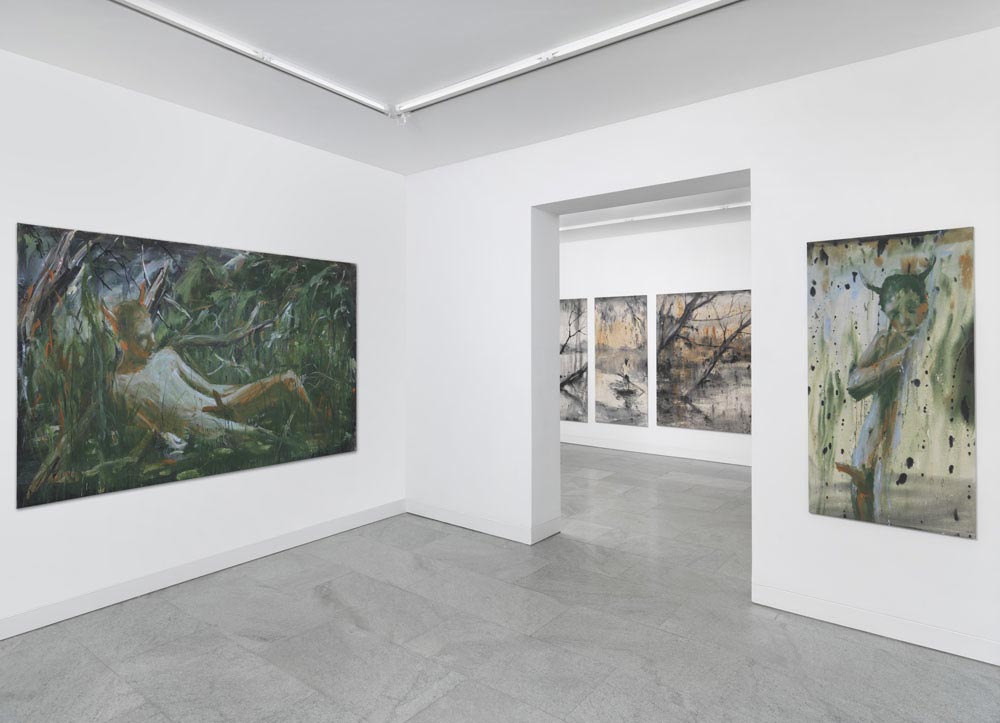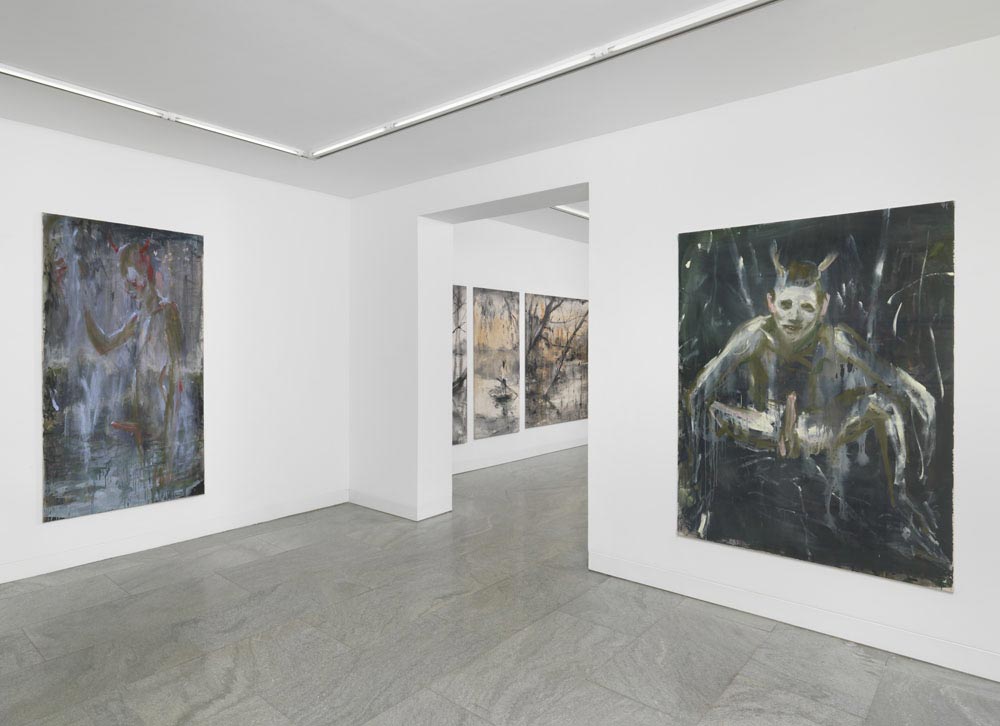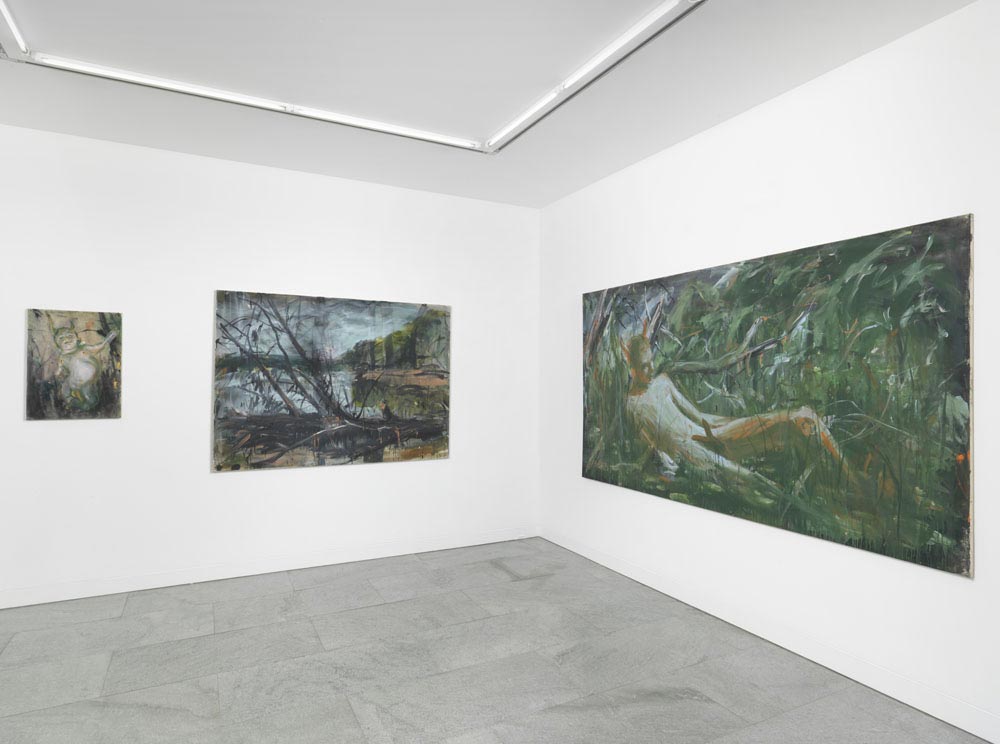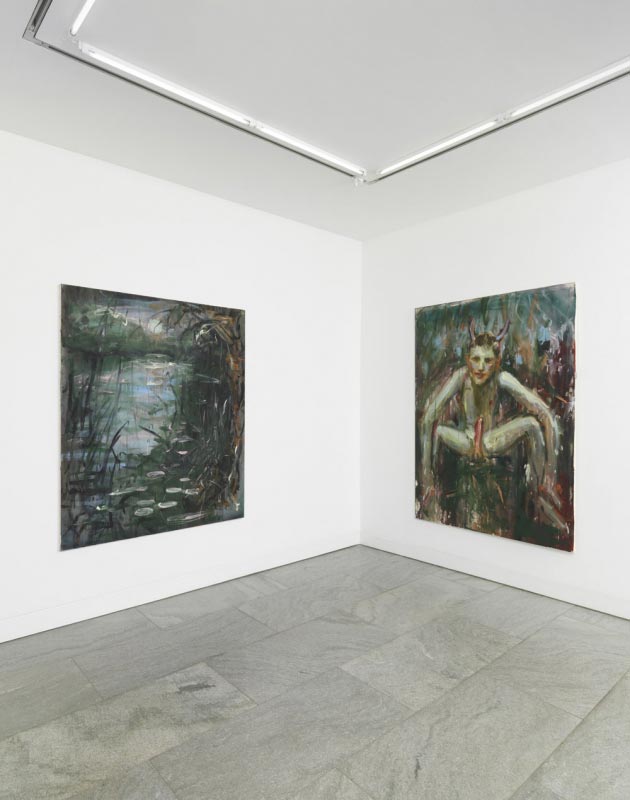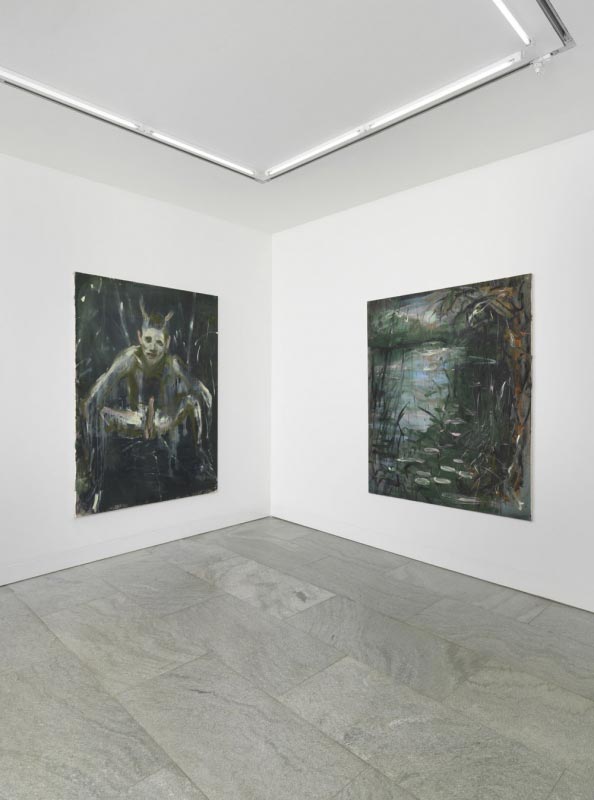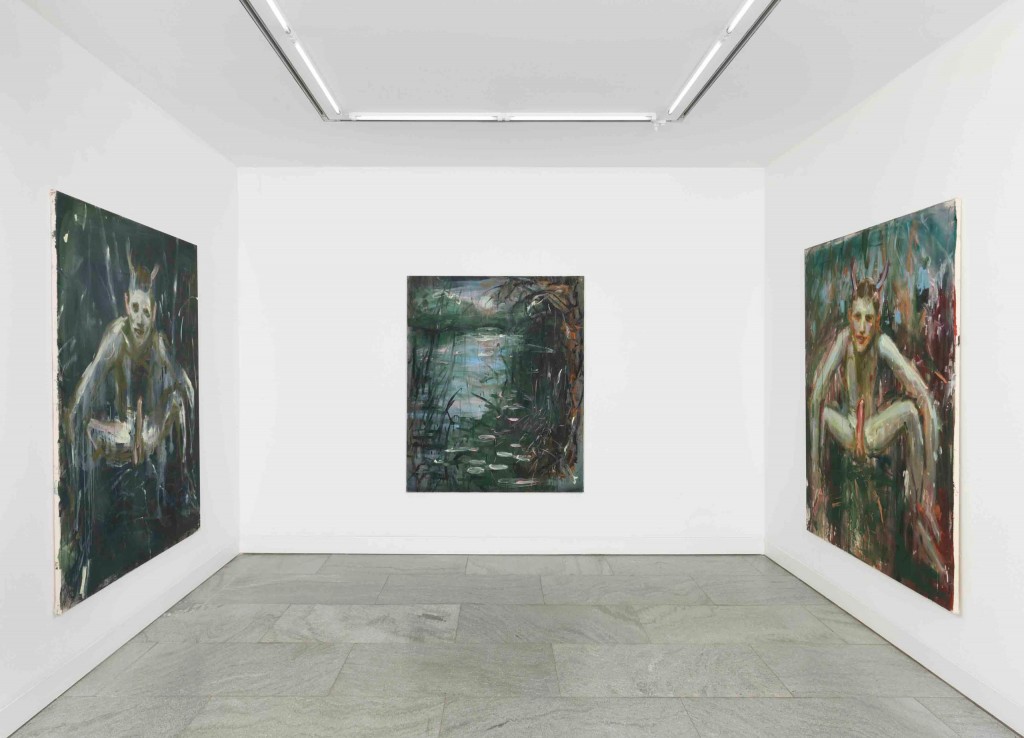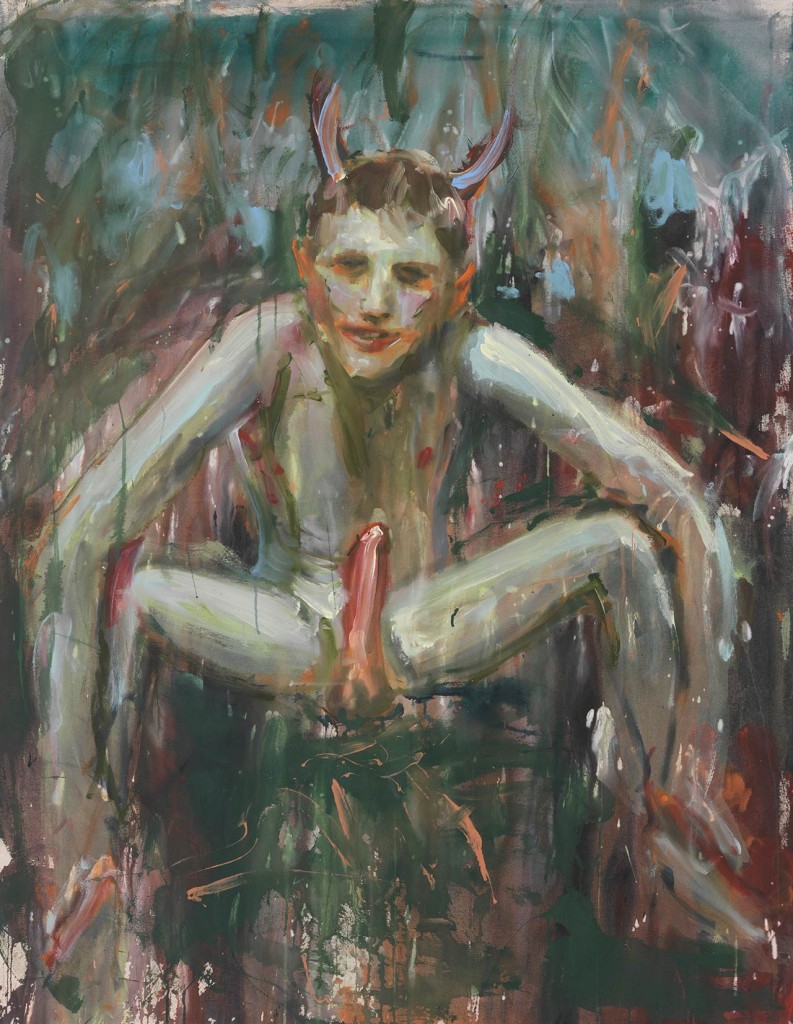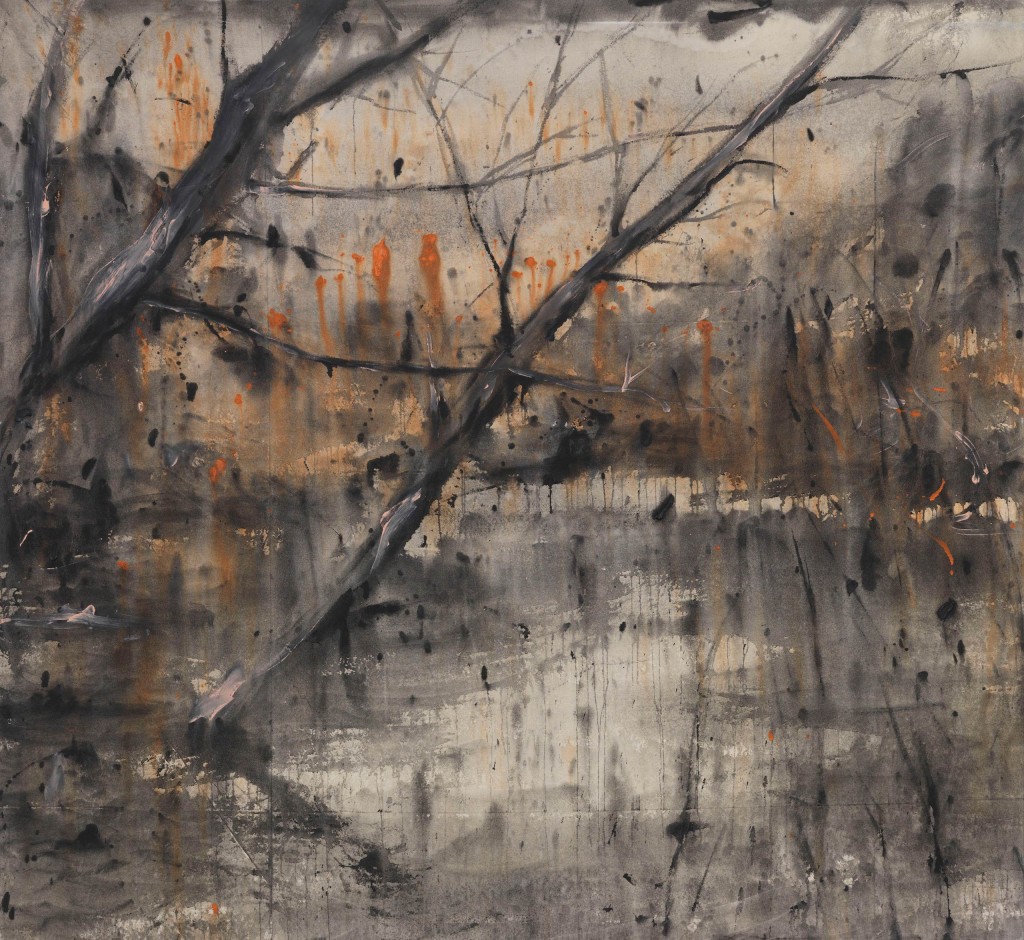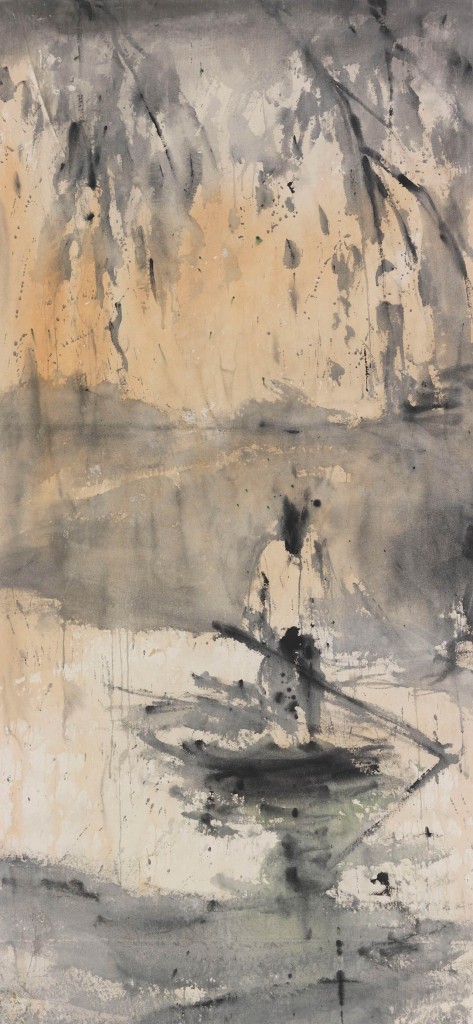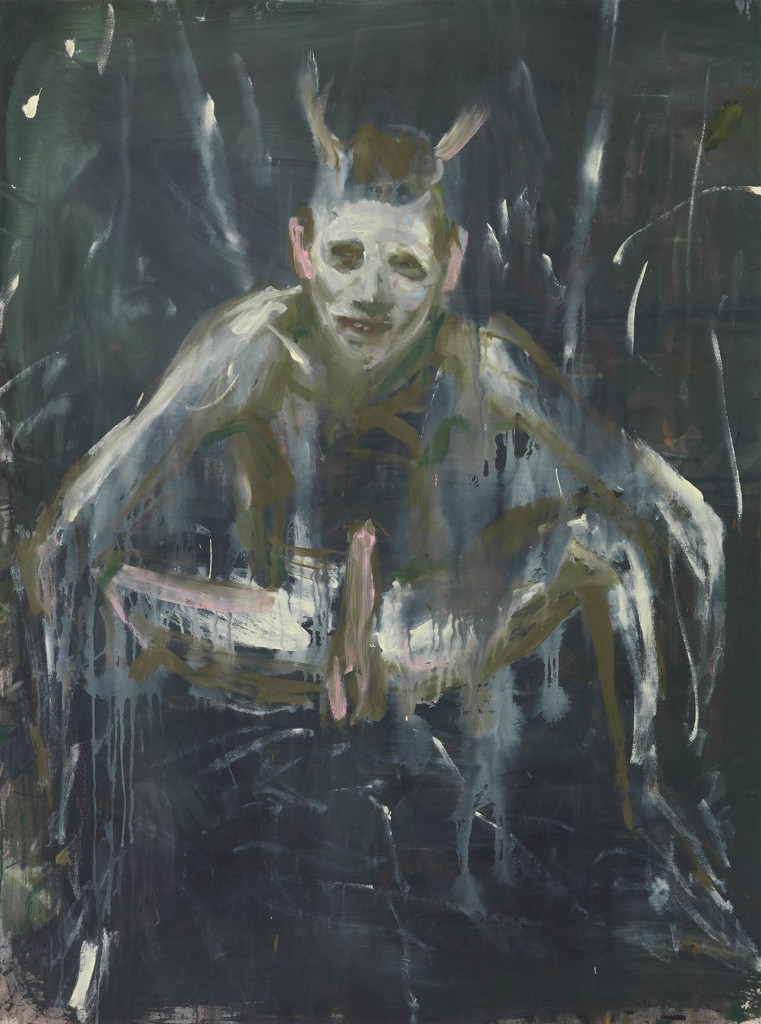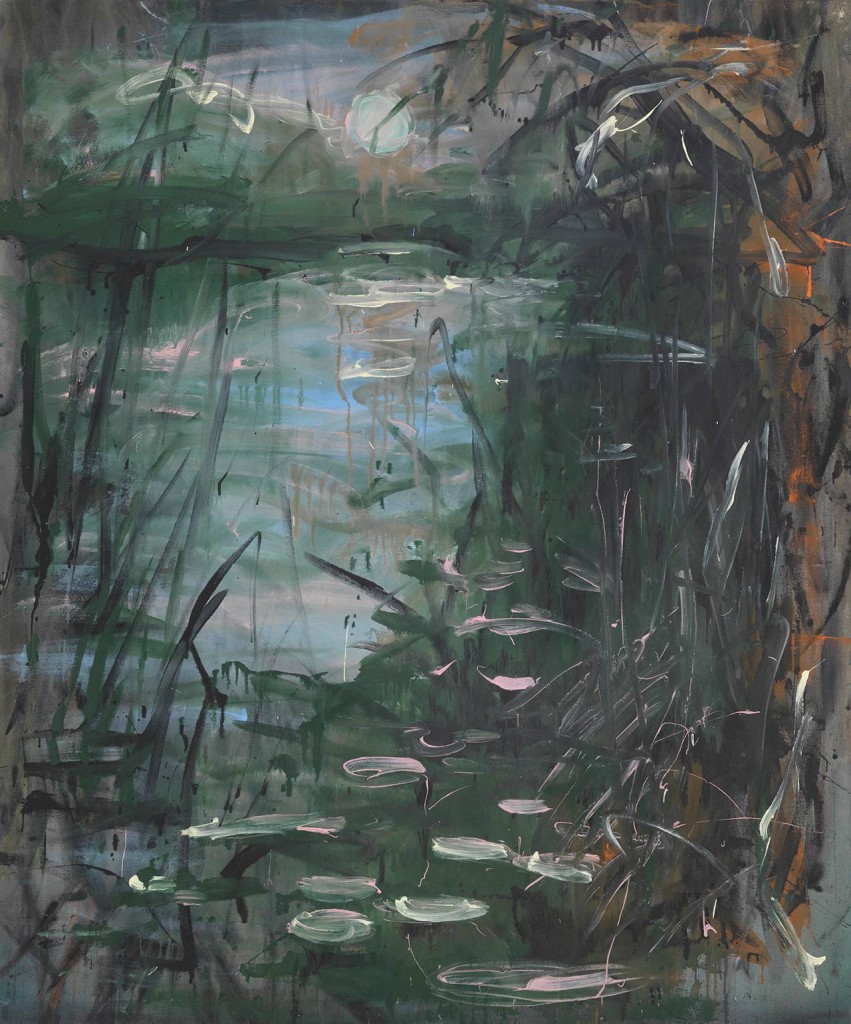DITTRICH & SCHLECHTRIEM is proud to present the first solo exhibition with Andrej Dúbravský, titled Do You Want To Live Like Me?. The installation at the gallery will include a number of large scale, stretched and unstretched, acrylic and oil paintings on canvas suggestive of wet, sentimental traditional landscapes and romantic out-of-doors figurative representations, pointedly self-aware and strikingly provocative in execution.
“Andrej Dúbravský comes from Bratislava, the capital of a small central European country, far from the centre of art things, even if Vienna – that once glorious capital of a great Empire – is very nearby. The more famous city’s dreams of cultural significance – which paradoxically even now likes to believe it invented the modern world, exposing sexual neurosis and tension as the driver and locus of the contemporary, as we understand it – culturally became marginalized one hundred years ago, now almost to the day, with the outbreak of the I World War. In that sense of delayed time and provincial place in the best sense, it is unsurprising that Andrej Dúbravský’s ambitiously conceived painting should be so suffused with hedonistic contemporary danger. […]
Andrej Dúbravský’s paintings indeed hark back to earlier expressive worlds, a century ago, of an artistic revolution inhabited by Egon Schiele and Oskar Kokoschka in Vienna, and Ernst Ludwig Kirchner and Otto Mueller in Dresden, the latter two part of the ground breaking group of artists based around 1910 in Dresden and known collectively as Die Bruecke or the Bridge. […] The best paintings, done in that now seemingly quite distant past, were invariably filled with naked bathers and other scenes of subjective sexuality and tension that reflect the transgressive obsessions of that age. Although there are human constants in the representation of sexuality, there is also that intangible thing known as the zeitgeist that reflects in both style and content the particular nuances that characterise a time, its freedoms and its repressions and a genius that lies in a place. Freedoms such as Andrej Dúbravský is able to enjoy and depict are reflections of these imperatives – he is both an expression and even a prisoner of his arguably dangerous and personal modes of thinking -, from which he has no intention of letting us – his viewers – escape, any more or less than did Vladimir Nabokov, writing in an other age, when describing Lolita and those who surrounded her. Political incorrectness is indeed sometimes required in order to arrive at genuine truths about the human psyche. […]“
The text excerpts above are from an essay by Curator and Art Historian Norman Rosenthal on the work of Andrej Dúbravský published in the recent premier issue of TVTOR magazine.
Andrej Dúbravský (b.1987) graduated from the Academy of Fine Arts and Design, Bratislava with a degree in painting. Dúbravský’s work has been presented in numerous solo-exhibitions throughout Europe as well as group exhibitions in New York, Buenos Aires and Tokyo, among others. His work has recently been acquired by the Slovak National Gallery.
DITTRICH & SCHLECHTRIEM will publish a catalogue on occasion of the exhibition, which includes an essay by Daniel Schreiber. The gallery is open Tuesday through Saturday from 11 to 6 pm. During the weekend, May 3rd-4th, the gallery will have extended opening hours from 11 am to 7 pm. Please contact Owen Reynolds Clements with press requests or for further information at owen@dittrich-schlechtriem.com
DITTRICH & SCHLECHTRIEM freut sich die erste Einzelausstellung von Andrej Dúbravský mit dem Titel Do You Want To Live Like Me? in der Galerie zu präsentieren. Die Installation beinhaltet eine Reihe großformatiger, aufgespannter und nicht bespannter Acryl- und Öl- Gemälde auf Leinwand, die feuchte, sentimentale, traditionelle Landschaften andeuten und romantische figurative Abbildungen im Freien zeigen, die eindringlich ihrer Selbst bewusst und auffallend provokativ in ihrer Ausführung wirken.
„Andrej Dúbravský kommt aus Bratislava, der Hauptstadt eines kleinen mitteleuropäischen Landes fernab vom Epizentrum der Kunstwelt, auch wenn Wien – einst prächtige Hauptstadt eines großen Reiches – gleich nebenan ist. Die Träume dieser berühmteren Nachbarstadt vom eigenen kulturellen Rang – paradoxerweise glaubt man dort noch heute gern, man habe die moderne Welt erfunden, als man sexuelle Neurosen und Spannungen als Triebfeder und Szene des Zeitgenössischen im heutigen Sinne entdeckte – rückten beinahe auf den Tag genau vor hundert Jahren, mit Ausbruch des Ersten Weltkriegs, an den kulturellen Rand. Aus dieser Welt, wo die Zeit ein wenig stehengeblieben ist, von diesem im besten Sinne provinziellen Ort, kommt mit Andrej Dúbravskýs Malerei eine anspruchsvoll konzipierte Kunst, aus der gerade deshalb das Gefährliche des zeitgenössischen Hedonismus hervorstrahlt. […]
In Andrej Dúbravskýs Gemälden klingen in der Tat ältere Ausdruckswelten nach, die der künstlerischen Revolution, die vor einem Jahrhundert von Egon Schiele und Oskar Kokoschka in Wien und Ernst Ludwig Kirchner und Otto Mueller in Dresden ausgelöst wurde. Die beiden letzteren waren Mitglieder der bahnbrechenden Künstlergruppe, die um 1910 in Dresden wirkte und unter dem gemeinsamen Namen Die Brücke bekannt ist. […] Die besten der in jener nun scheinbar schon fernen Vergangenheit entstanden Bilder sind allesamt voll von nackten Badenden und anderen Szenen subjektiver Sexualität und Gespanntheit, die das obsessive Interesse der Zeit an der Grenzüberschreitung widerspiegeln. In der Darstellung der Sexualität gibt es zwar Konstanten menschlicher Erotik, aber eben auch jenes kaum fassbare etwas, das man Zeitgeist nennt und das in Stil wie Inhalt die besonderen Schattierungen wiedergibt, die eine Zeit, ihre Freiheiten und Verdrängungen und die besondere Atmosphäre eines Ortes ausmachen. Freiheiten, wie Andrej Dúbravský sie wahrnehmen und bildnerisch darstellen kann, sind die Kehrseite dieser Imperative – er ist zugleich Ausdruck und sogar Gefangener seiner, man wird wohl sagen dürfen, gefährlichen und ganz persönlichen Denkweise –, und er zeigt ganz wie Vladimir Nabokov, der in einer anderen Zeit Lolita und die Menschen um sie zeichnete, keine Absicht, uns, seine Betrachter, aus ihnen zu entlassen. Manchmal braucht es das politisch Unkorrekte, um zu originären Einsichten in die Wahrheit der menschlichen Seele zu gelangen. […]“
Die Textauszüge stammen aus einem Essay des Kurators und Kunsthistorikers Norman Rosenthal über das Werk von Andrej Dúbravský publiziert in der ersten und aktuellen Ausgabe des TVTOR Magazins.
Andrej Dúbravský (geboren 1987) ist Absolvent der Hochschule für Bildende Künste Bratislava mit einem Abschluss in Malerei. Dúbravskýs Werk wurde in zahlreichen Einzelausstellungen in Europa gezeigt sowie auch unter anderem in Gruppenausstellungen in New York, Buenos Aires und Tokio. Eines seiner Werke wurde vor kurzem in die Sammlung der Slowakischen Nationalgalerie aufgenommen.
DITTRICH & SCHLECHTRIEM wird einen Katalog zur Ausstellung, mit einem Essay von Daniel Schreiber, veröffentlichen. Die Galerie ist von Dienstag bis Samstag von 11 bis 18 Uhr geöffnet. Am Wochenende des 3. – 4. Mai hat die Galerie verlängerte Öffnungszeiten von 11 bis 19 Uhr. Für Presseanfragen oder weitere Informationen wenden Sie sich bitte an David Khalat, david@dittrich-schlechtriem.com/old/old.
